Blog
We all dream of having a beautiful garden - whether it's a serene space to relax in the sun or a lively spot to entertain guests.
But how much will it actually cost to turn that dream into a blossoming reality?
Here, we explore the wealth of landscaping possibilities that are at your fingertips and shed light on the costs involved with each. So, whether you want a contemporary urban space or a sprawling countryside meadow, keep reading to learn everything you’ll need to know about effective budgeting for landscape design.
What is garden landscaping?
Garden landscaping is the art of transforming your outdoor space into a beautiful and functional area. It involves carefully planning and designing various elements to create a garden you'll love for years to come.
There are two main types of landscaping: hard landscaping and soft landscaping. Hard landscaping refers to the structural elements of the garden, including:
- Paving
- Outdoor tiles for patios
- Perimeter and retaining garden walls
- Garden paths and driveways
- Water features
These are essential to provide the backbone of the design and to define key areas or ‘zones’.
Soft landscaping, on the other hand, covers the living elements of the garden, such as plants, trees, and shrubs, which add colour, texture, and life to your outdoor space.
Whether you're looking to create a tranquil retreat, a vibrant space for family gatherings, or a functional outdoor living area, garden landscaping offers endless possibilities for transforming your home’s outdoor spaces.
What jobs can garden landscapers do?
Landscape gardeners and installers can do a wide range of jobs, some of which require expert tools and experience. Many people choose to hire a professional landscaper because of the amount of manual labour needed to transform an entire garden, but it is possible to do some or all of these jobs yourself.
Garden landscapers can help with:
- Laying artificial grass
- Laying paving slabs and spreading gravel
- Installing garden lighting
- Building garden furniture
- Building retaining walls around raised beds
- Fitting outdoor kitchen spaces
If you want support with any of these jobs, explore our directory of Marshalls accredited installers to find trusted, professional tradespeople in your local area.
How much does garden landscaping cost on average?
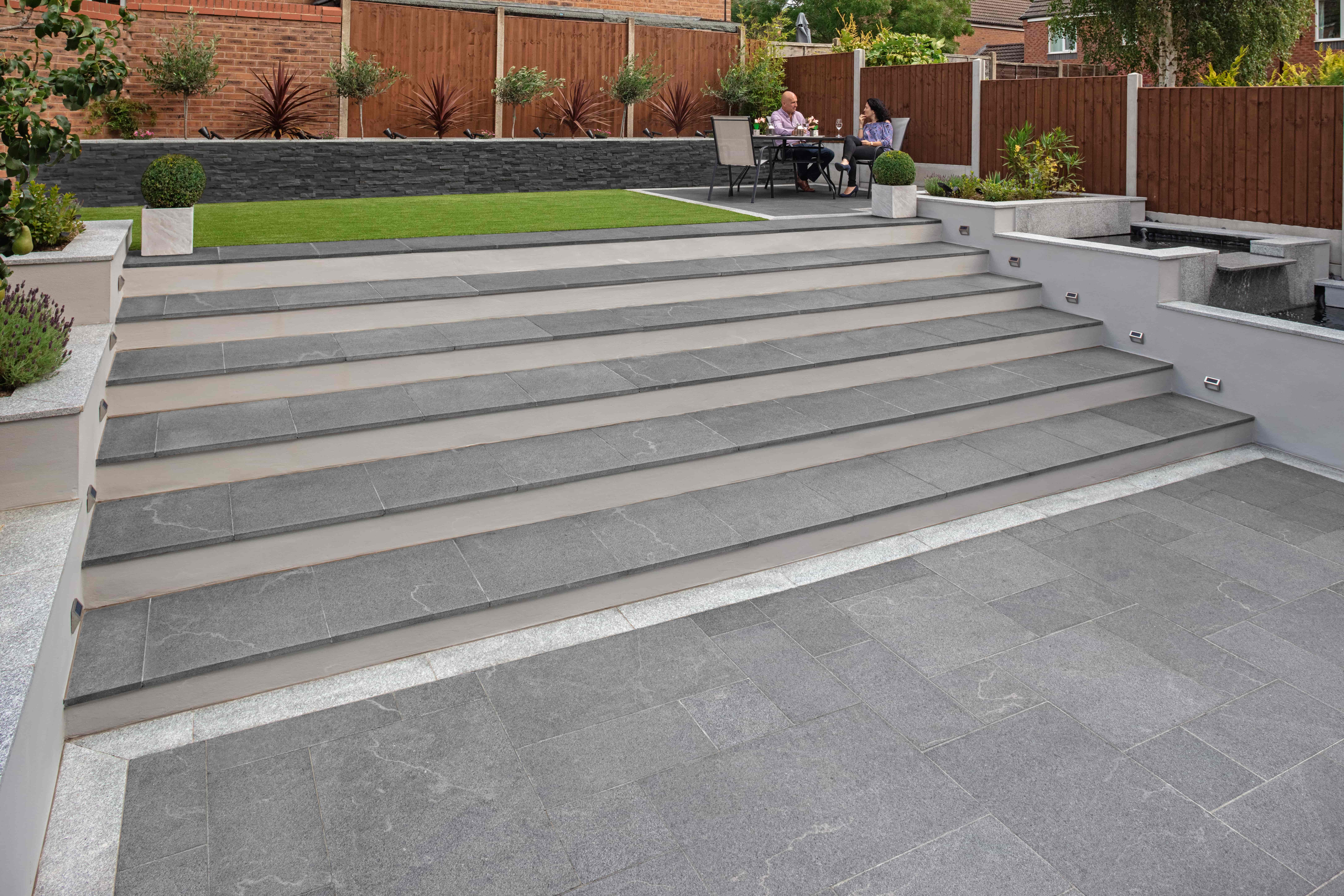
The cost of garden landscaping varies depending on the size of the garden, the scope of the project, the materials used, and the location/access.
On average, homeowners can expect to pay anywhere from £1,000 to £15,000 or more for landscaping projects. The difference in cost for small-scale projects like planting flower beds compared to installing a basic patio goes from a few hundred to a few thousand pounds.
Larger projects involving jobs like building retaining walls, removing slopes, or adding a water feature can range from several thousand to tens of thousands of pounds.
What affects garden landscaping costs?
Understanding the size and complexity of the project, as well as the choice of materials and labour involved, will help you navigate garden landscaping and budget effectively.
1. The type of landscaping work
Different landscaping tasks require varying levels of expertise, time, and resources. For example, installing garden features like potted plants and shrubbery costs less than levelling a sloped garden or building a retaining wall.
2. Garden size
The size of your garden is a fundamental factor in determining landscaping costs. Larger gardens naturally require more materials, labour, and time to complete the project compared to smaller ones. Whether you have a cosy courtyard or a sprawling estate, the scale of the project influences the overall expense.
3. Materials and supply costs
The choice of materials, such as paving stones, plants, and irrigation systems, significantly affects landscaping costs. High-quality materials may come with a higher price tag but often last much longer and are more pleasing to the eye.
Factors like availability and transportation costs can also impact material expenses.
4. Labour costs
If you’re not a confident gardener, hiring a skilled landscaper or gardening team is essential to make sure your garden landscape dreams come to life.
The average price of a landscape gardener in the UK can vary depending on various factors such as the location, the project's complexity, and the gardener's experience level.
For larger projects, from complete garden renovations to extensive landscaping work, some gardeners may offer a fixed price for your project based on the scope of work involved.
5. Design complexity
Intricate designs with custom features, such as terraced gardens, intricate pathways, or elaborate plant arrangements, typically require more planning, labour, and materials.
6. Location
Location significantly influences landscaping costs in the UK, with urban areas like London generally seeing higher hourly rates due to increased living costs and demand.
Areas with more affluent communities or fewer skilled professionals might also come with a heftier price tag. Plus, the availability of materials, local rules, and how easy it is to get to your site all play a role in your final bill.
7. The condition of your garden beforehand
The condition of your garden before landscaping work begins can affect costs.
If your garden requires extensive clearing, grading, or addressing drainage issues, you might come up against additional expenses.
Pre-existing features, such as mature trees or structures, can also impact the scope of work and associated costs.
How to save money when landscaping a garden
Before we get to some tips, there are a few things to note regarding cost. The first is that although a garden project costs money, it can add value to a property and increase kerb appeal, which could benefit you in the future and give you a tranquil extension of your home to enjoy for years to come. The second to note is that, when it comes to laying a patio, the most significant cost elements to your project will be the installation and subbase therefore you can spend more on paving materials without significantly increasing the overall cost of the project:
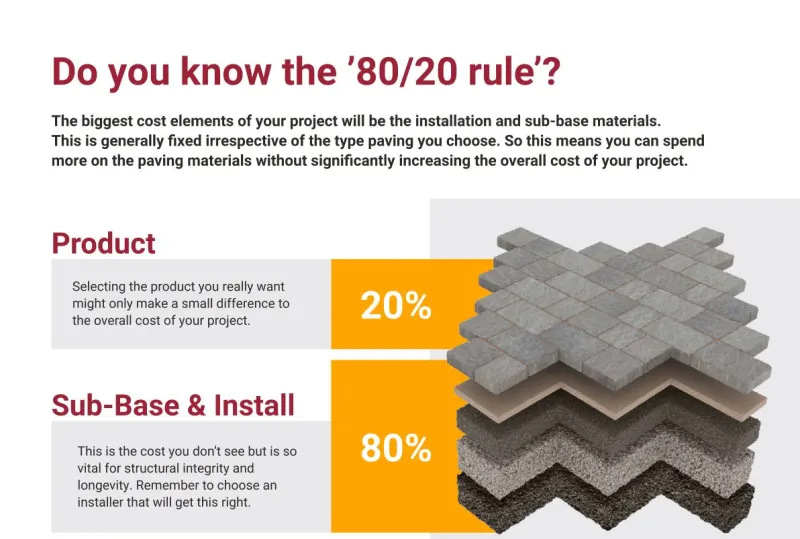
If the budget is tight, it is possible to have a gorgeous new outdoor space without breaking the bank. Follow these tips to find out how to save money on your garden project.
1. Plan your design carefully
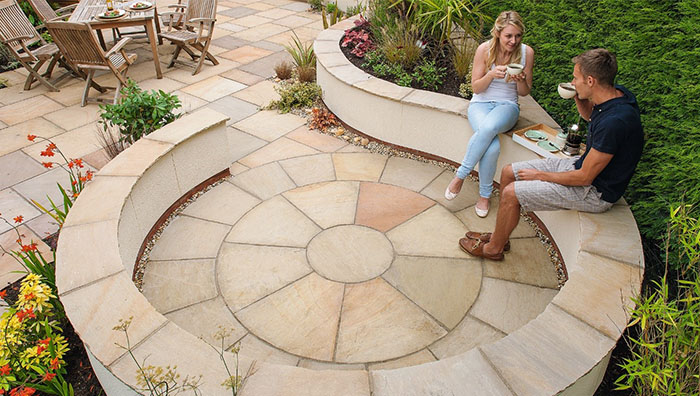
Take the time to carefully plan your garden design before starting any work, cutting out the need for a garden designer. This includes considering the layout, focal points, and functional areas like seating areas and pathways.
By having a clear plan in place, you can avoid costly mistakes and ensure that every element of your garden serves a purpose.
You can make use of a handy garden design app, such as Marshalls' Outdoor Reality App, to minimise material wastage and visualise different landscaping materials in your garden before deciding on your favourite.
2. DIY where possible
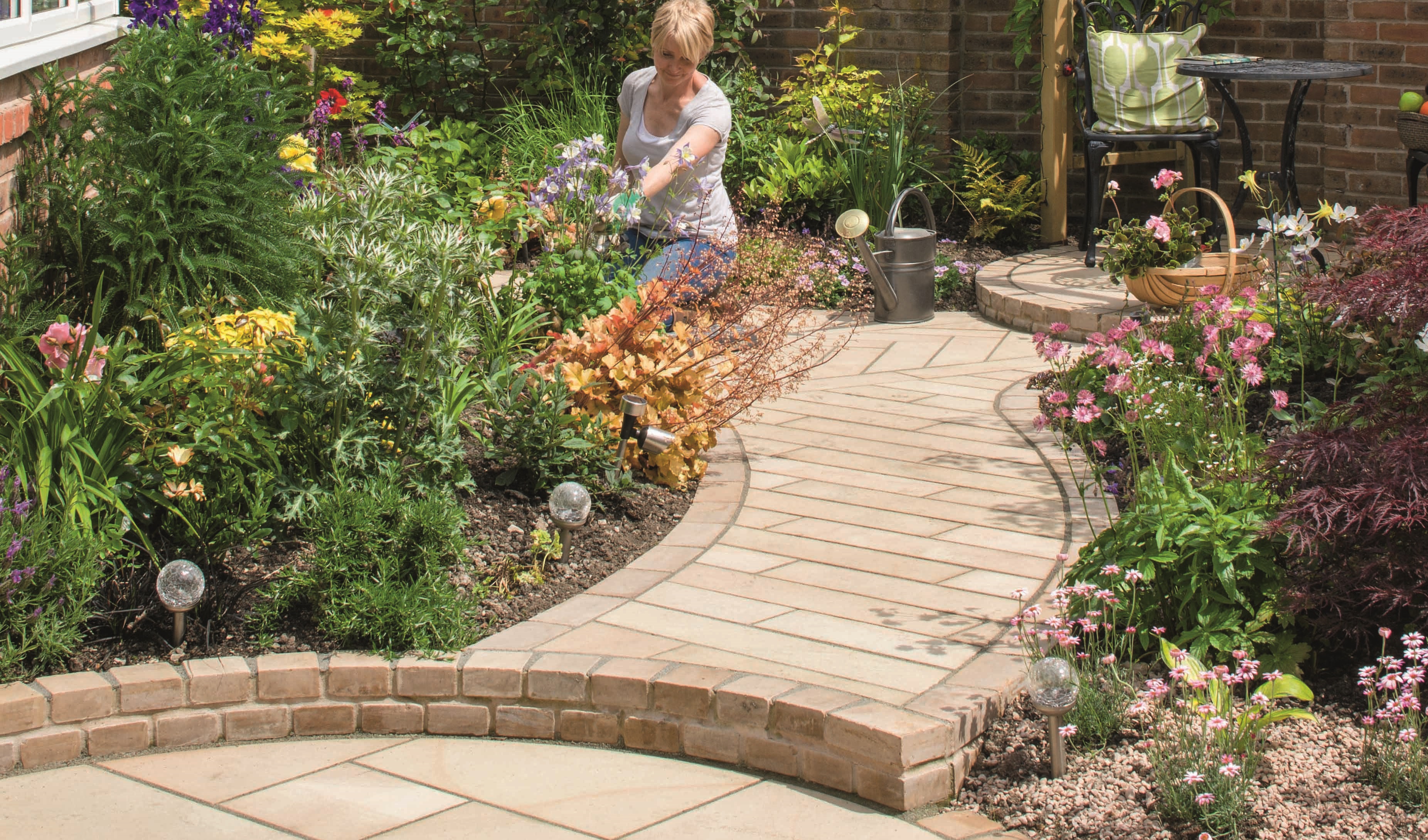
Cut your landscape garden cost by tackling some of the landscaping tasks yourself. This could include general tidying work, like weeding and removing plants or disposing of old garden furniture yourself before the landscaper comes in.
If you feel comfortable or are willing to challenge yourself, have a look at our blog for ideas on how to transform your garden's borders, budget small garden ideas to inspire your space and more.
3. Get creative with paving
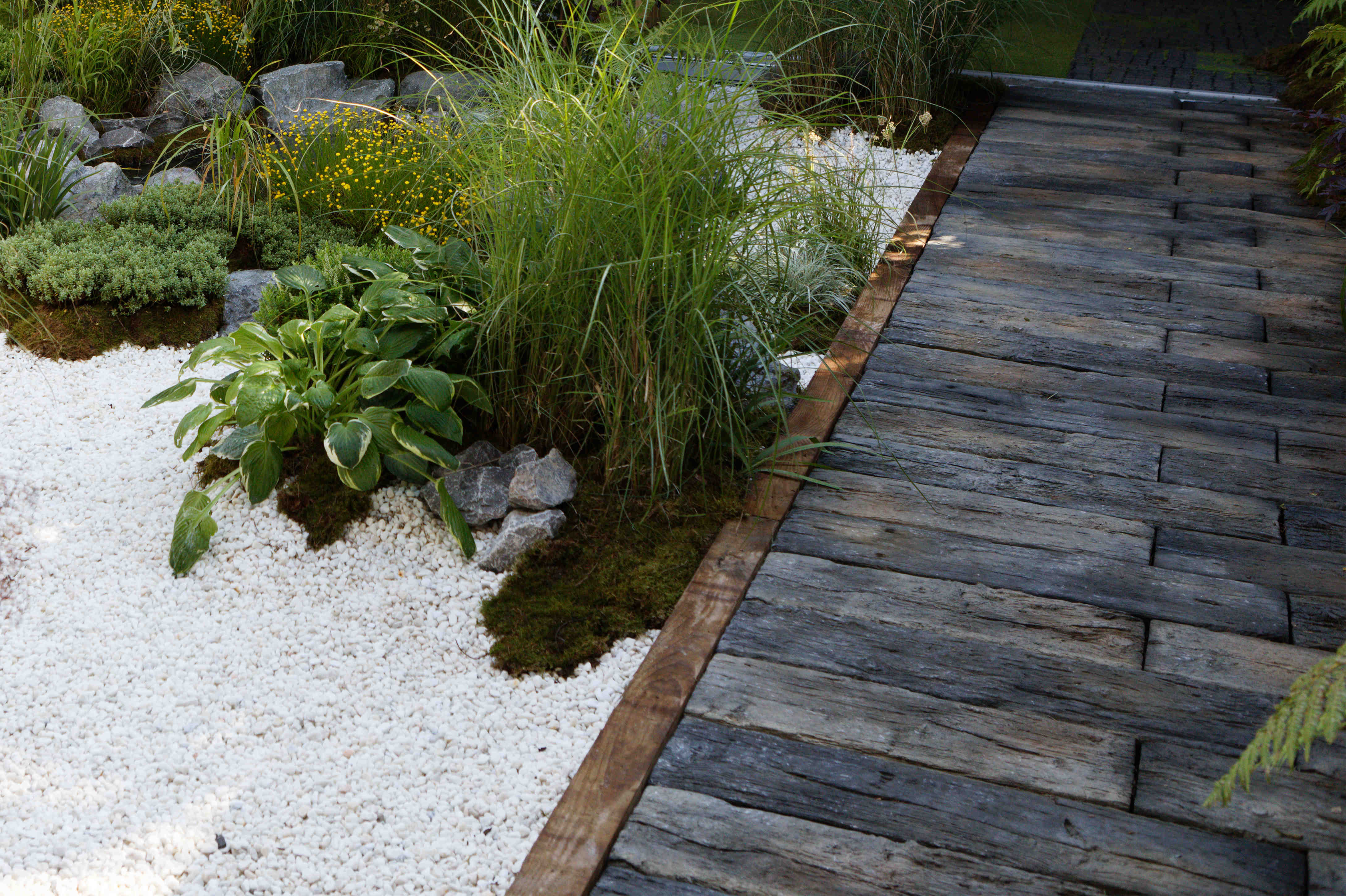
Paving materials can be expensive, but there are ways to save money without compromising on style. It’s useful to know that paving is approximately 20% of an install cost, so scaling up or down on paving choice won’t make as much of an impact on the overall cost as amending the size of the area you cover or the complexities of your patio design. Certain types of paving like porcelain and natural stone need to be installed on a mortar bed, whereas concrete can be installed on a flexible bed, which is quicker and uses less materials. It’s good to cost up your options for your design using tools like our Outdoor Reality app which gives you a rough idea of paving and installation costs.
Our collection of expert how-to blogs teaches you how to lay sandstone paving, how to lay a garden path and more.
You can substitute the materials used in different areas of your patio to cut costs, looking at an example of a pathway, instead of making it fully paved you can opt for budget-friendly options like gravel, crushed stone, or wood chippings, which can create a charming rustic look that connects the different areas of your project.
4. Upcycle
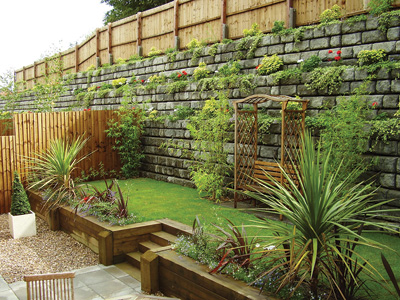
Turn old or unused items into unique garden features through upcycling. Repurpose old pallets into vertical planters, transform vintage containers into stylish flower pots, or use discarded bricks to create a rustic border for your flower beds.
Upcycling not only saves money but also adds character and charm to your garden.
5. Choose low-maintenance plants
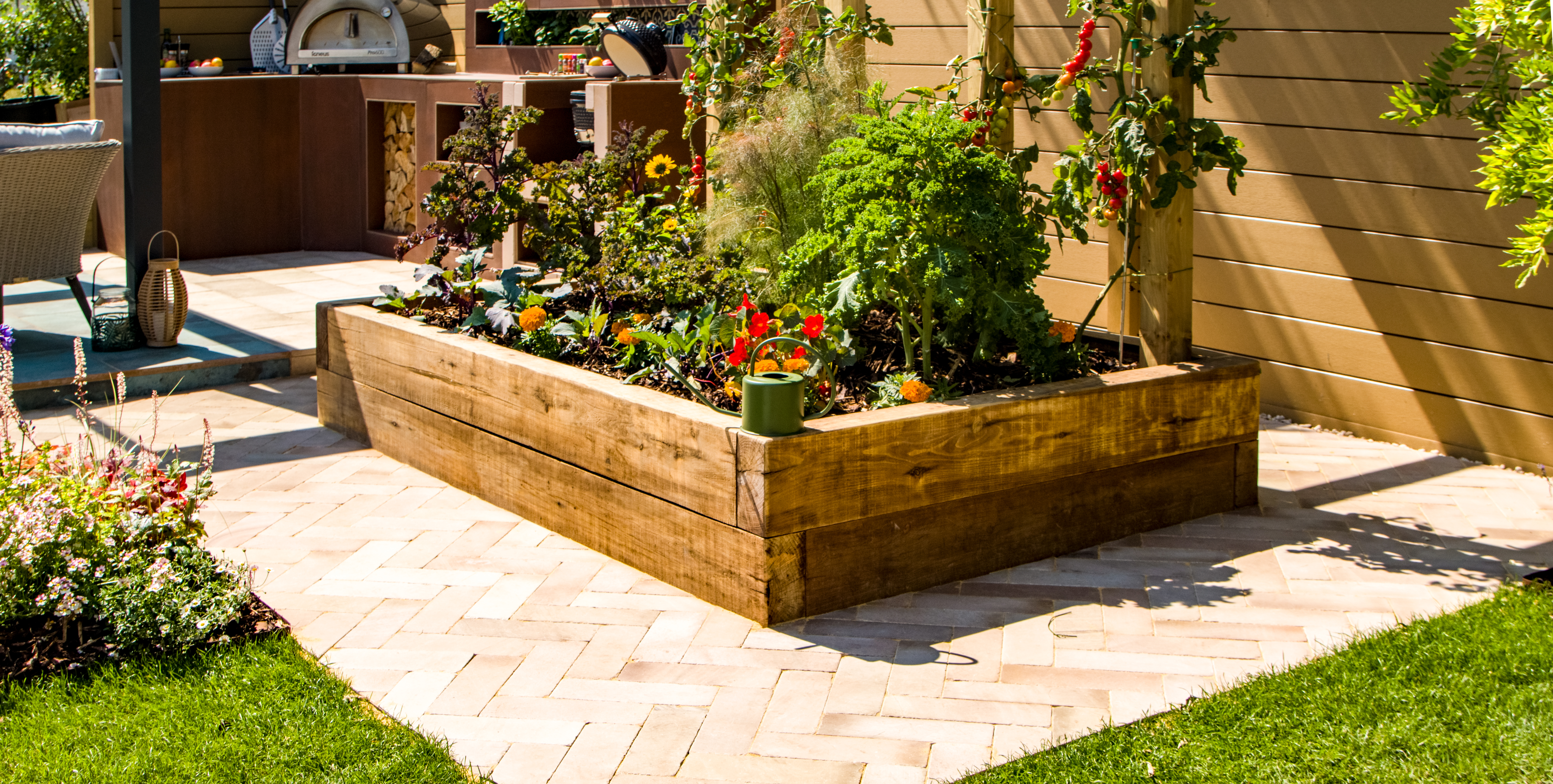
Having a low-maintenance garden and low-maintenance plants can save you time.
Look for plant species that are well-suited to your climate and soil conditions, require minimal watering and pruning, and are resistant to pests and diseases.
Want those low-maintenance ideas to extend beyond just the back garden? See our blogs on low-maintenance front garden ideas and small front garden ideas to add some kerb appeal to your home.
6. Invest in long-term solutions
When it comes to things like fence panels and decking materials, you don't want to be replacing them every few years, so make sure you're buying durable materials and infrastructure that will stand the test of time.
Doing this may not have too much of an impact on the final cost of the landscaping work, but it can save you money in the long run by reducing the need for repairs and replacements.
For more cost-saving tips, explore our blogs on budget small garden ideas, budget patio ideas, and inexpensive driveway ideas.
Tips for hiring a professional landscape gardener
Whether you're embarking on a small garden makeover or a large-scale landscaping project, these tips will ensure that you find a professional landscaper who understands your vision and can bring it to life with skill and expertise.
1. Do your research
Take the time to research landscape gardeners in your area. Look for professionals with experience, specialisations in a relevant area of landscaping, positive reviews, and a portfolio of completed projects.
It's worth asking for recommendations from friends, family, or neighbours who have had landscaping work done recently.
At Marshalls, we have a directory of installers and landscapers. They are all strictly vetted and monitored by us to assess their levels of competence and performance, so you know you're only getting the best in the business.
See our blog on tips for avoiding rogue traders for more advice and support.
2. Know your budget
We have already indicated how much landscaping can cost and the different factors at play. So, before diving into your garden makeover project, you need to review your finances and understand how to landscape your garden within your financial means.
Once you have chosen a garden landscaper, work with them to ensure you don't go over budget and that all the materials and labouring costs, etc., can be accounted for.
3. Communicate and collaborate
Your garden is an extension of you and your home, so you want it to look perfect. Before you start approaching landscapers, make sure you have a clear, defined idea of what you want your garden to look like.
Choose a garden landscaper who listens to your ideas, provides valuable input, and keeps you informed throughout the process.
For design ideas and inspiration, check out our garden and driveways blog.
For ideas on material types, check out our free design tools.
4. Ask about aftercare and maintenance
Inquire about aftercare and maintenance services once the landscaping work is complete.
A professional gardener should provide guidance on caring for your newly landscaped garden, including watering, pruning, fertilising recommendations and how to keep your paving looking great year after year. Additionally, ask about warranty or guarantee policies for their workmanship.
Landscape your dream garden with Marshalls
With careful planning, smart choices, and the proper professional assistance, creating your dream garden is well within reach.
And Marshalls is here to help you every step of the way. With our wide range of high-quality garden paving, expert advice, and professional services, we can turn your vision into reality.
From sleek white garden paving and natural stone paving to a wide range of garden walling products, Marshalls will help you to create a space you can take pride in.
FAQs
How long does it take to landscape a garden?
The time it takes to landscape a garden varies depending on the scope and complexity of the project. Small-scale projects, like planting a few flower beds or installing a simple patio, may take a few days to a week to complete.
Larger and more intricate projects, such as redesigning the entire garden layout, can take several weeks or even months to finish. Factors including weather conditions, availability of materials, and the size of the landscaping team also play a role in determining the timeline.
It's important to discuss the estimated timeframe with your landscaper to ensure realistic expectations and smooth project completion.
Why are landscape gardeners expensive?
Landscape gardeners may seem expensive upfront, but their expertise and services are a long-term investment that enhances both your quality of life and the value of your property.
By entrusting professionals with your garden, you're ensuring meticulous design and maintenance that create a beautiful outdoor space - a serene retreat where you can relax and entertain.
What is the best time of year to landscape a garden?
In the UK, the best times to landscape a garden are typically during spring or autumn. Spring brings milder weather and more rainfall, which helps new plants settle in and grow strong. It's perfect for adding colourful flowers and shrubs that can thrive during the warmer months.
Autumn is also a good time because the soil is still warm from summer, making it easier for plants to establish their roots before winter. Plus, the cooler temperatures help prevent stress on newly planted greenery.










